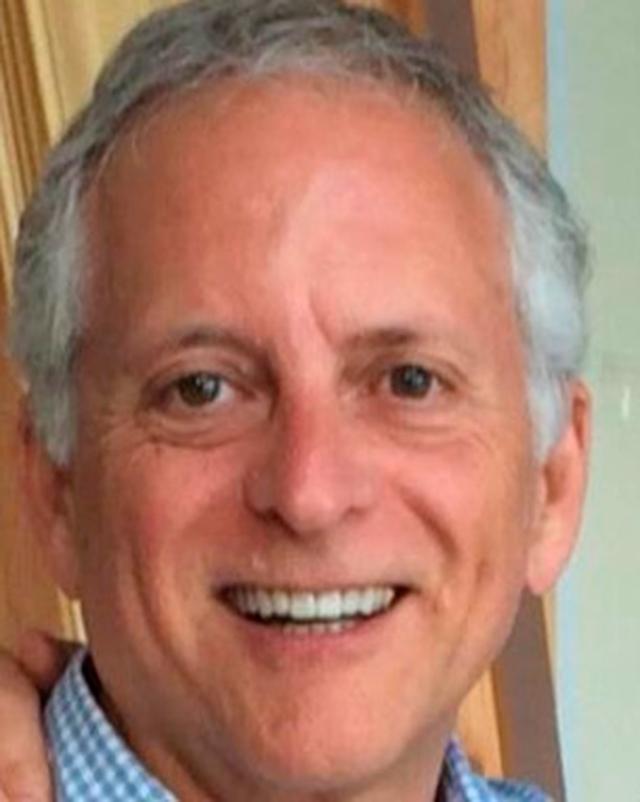by Gretchen Wing
What does it mean when the worst luck pairs with the best? For longtime part-time Lopezian Jack Odell, blindsided by a diagnosis of a rare cancer, it means recognizing the serendipity of meeting and teaming with the best possible doctors to fight his disease. A successful architect, Jack has now embarked on a second career of guiding less fortunate people with cancer onto the path he has discovered.
The stunning house Jack designed on a promontory overlooking Barlow Bay speaks volumes about his abilities in architecture and design. Born in Cleveland, educated at Kent State and Montana State, Jack launched his career with a three-year internship in Regina, Saskatchewan. In 1978 he relocated to Seattle, where, eight years later, he met John Dagres. Jack designed a home there, and a year later, the couple bought their Lopez property.
Approaching retirement, Jack says, “we expected to be spending time here, living it up, maybe traveling…but maybe that’s not my calling.”
In the summer of 2013, while clearing trees around their Lopez home, Jack experienced some problems in his left eye. At his eye appointment, Jack recalls a “Hitchcock moment.”
“The doctor told me, ‘Yeah, it all looks good’ and left the room … and then literally did an 180 and came back in saying, ‘You know, it doesn’t. There’s a shadow in there we need to take another look at.’”
A few days later, an ultrasound confirmed the doctor’s fear: Jack had Ocular Melanoma. His tumor was located in the area of the eye containing the most blood vessels—the location with the highest chance of spreading. Jack was 61, in otherwise terrific health.
The day of the diagnosis, Jack and John applied for a marriage license. Two days later, July Fourth, they hosted a large party at their Seattle home … and told no one about the cancer. They were married the next day.
Then the fight began. After surgery to install tiny metal markers in his eye, Jack underwent proton beam radiation therapy at U.C. Davis — “über-science,” he calls it.
“They put you in a room with this thing that looks like an old Gatling gun, and you have to stare at this red light for two minutes, without moving.” Four days of this torturous treatment appeared to beat back the cancer cells.
But the real champion in Jack’s fight was DNA scientist Dr. Hartmut Stecher, who arranged genetic testing on Jacks’ tumor. The tests revealed the worst possible luck: Jack’s cancer was “Type 2,” very aggressive, including two gene mutations. Jack began a protocol of MRI scans every three months and CT scans every six. More and more invested in his own research, Jack felt uneasy relying solely on scans. Still, he insists, his greatest “luck” of all was meeting Dr. Stecher, whose brilliance and focus Jack desires all cancer patients to have access to.
Now confirmed citizens of Cancer Nation, Jack and John began the search for a drug to inhibit the tumor’s regrowth. Unfortunately, Jack says, Ocular Melanoma is considered an “orphan cancer,” meaning too rare to be financially worthwhile for drug companies to target in trials. The couple consulted with leading eye cancer specialists in Philadelphia and Houston, searching for options with bearable side effects. In December, with Hartmut Stecher’s guidance, Jack began taking Vorinostat.
At first, the dosage zapped his platelet count down to 20 (instead of a normal 250+). Despite great fatigue, Jack continued to oversee the Lopez house remodel project he had begun — “my oncologist was having fits,” he laughs — and finally got his dosage stabilized. One three-week prescription, however, cost over $9,000. Jack’s insurance denied payment twice until Dr. Stecher got involved and referred Jack’s case to the state Insurance Board. It ruled in Jack’s favor.
The whole experience, from diagnosis to treatment to insurance, forced Jack and John to recognize their ironic good fortune. From online cancer forums and conferences, it became clear that other cancer patients were not receiving the guidance Jack was finding through the wilderness of disease.
“People need a filter for all the pages and pages of research they read,” he explains. “Close contact is what they crave, someone to break down that ‘doctor wall’ and help them understand.” Jack yearned to help.
A year after his diagnosis, Jack and one of his supporters helped Dr. Stecher expand his business into CancerTreatmentNavigator.com, now a team of scientists “excited by their front-row seats at fighting cancer,” Jack says.
He and friends also privately fund research at the University of North Carolina, and in 2015, Jack became Vice President of the nonprofit ACureInSight.org, dedicated to providing patient services and funding for Ocular Melanoma research.
Three and a half years after initial treatment, Jack credits his successful cancer fight to CancerTreatmentNavigator. CTN “cleared the fog of facts and kept us focused on a patient- specific, targeted therapy,” Jack says. “That’s what every cancer patient needs and deserves.”



